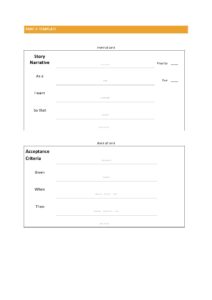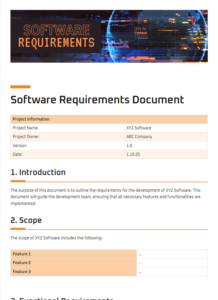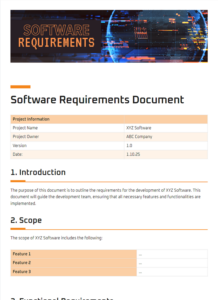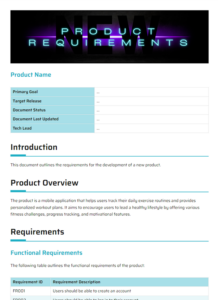A product requirement document (PRD) is a critical document that outlines the functional and non-functional requirements of a software product. It serves as a communication tool between stakeholders, developers, and end-users, ensuring that the final product meets the intended needs and expectations.
Creating a comprehensive PRD requires careful planning and attention to detail. To streamline this process, a product requirement document template can provide a structured framework and guidance. These templates typically include sections for defining product scope, functional requirements, user stories, acceptance criteria, and other relevant details.
Understanding the Elements of a Product Requirement Document Template
A product requirement document template typically consists of several essential sections that address different aspects of the product definition:
1. **Product Scope**: Defines the high-level purpose, goals, and boundaries of the product. It outlines the intended audience, use cases, and any applicable constraints or limitations.
2. **Functional Requirements**: Describes the specific functions and features of the product. These requirements are typically stated in a clear and testable format, ensuring that the product can be developed and validated against specific criteria.
3. **User Stories**: Captures user perspectives and expectations by detailing how different user types will interact with the product. User stories provide a narrative context that helps bridge the gap between technical requirements and end-user needs.
4. **Acceptance Criteria**: Defines the conditions that must be met for a requirement to be considered complete and accepted. This section ensures that all stakeholders have a clear understanding of what constitutes a successful product delivery.
5. **Additional Sections**: Depending on the product’s complexity, the PRD template may include additional sections such as non-functional requirements (e.g., performance, security, usability), user interface specifications, or detailed technical specifications.
The Benefits of Using a Product Requirement Document Template
Leveraging a product requirement document template offers numerous benefits:
1. **Improved Communication**: A well-structured template facilitates effective communication among stakeholders by providing a common language and framework for discussing product requirements.
2. **Reduced Risk of Misunderstandings**: By clearly defining requirements and acceptance criteria, the template helps minimize misunderstandings and misinterpretations, ensuring that all parties have a shared understanding of the intended product.
3. **Accelerated Development**: A comprehensive PRD provides a solid foundation for development teams, enabling them to start working on the product with a clear understanding of the desired outcomes.
4. **Increased Stakeholder Satisfaction**: By involving stakeholders in the PRD creation process and ensuring that their requirements are met, the template fosters stakeholder buy-in and satisfaction.
5. **Improved Product Quality**: A well-defined PRD serves as a reference point throughout the product lifecycle, helping to ensure that the final product aligns with the original requirements and meets the intended quality standards.
Conclusion
A product requirement document template is an invaluable tool for capturing and communicating the requirements of a software product. By providing a structured framework and clear guidelines, these templates streamline the PRD development process and improve communication among stakeholders. By leveraging a product requirement document template, organizations can increase the likelihood of creating high-quality products that meet the needs and expectations of their end-users.
Remember, the key to an effective product requirement document lies in its clarity, completeness, and alignment with the intended product vision. A well-crafted PRD is not merely a collection of requirements but a roadmap that guides the entire product development process, ensuring that the final product delivers on its promises.



